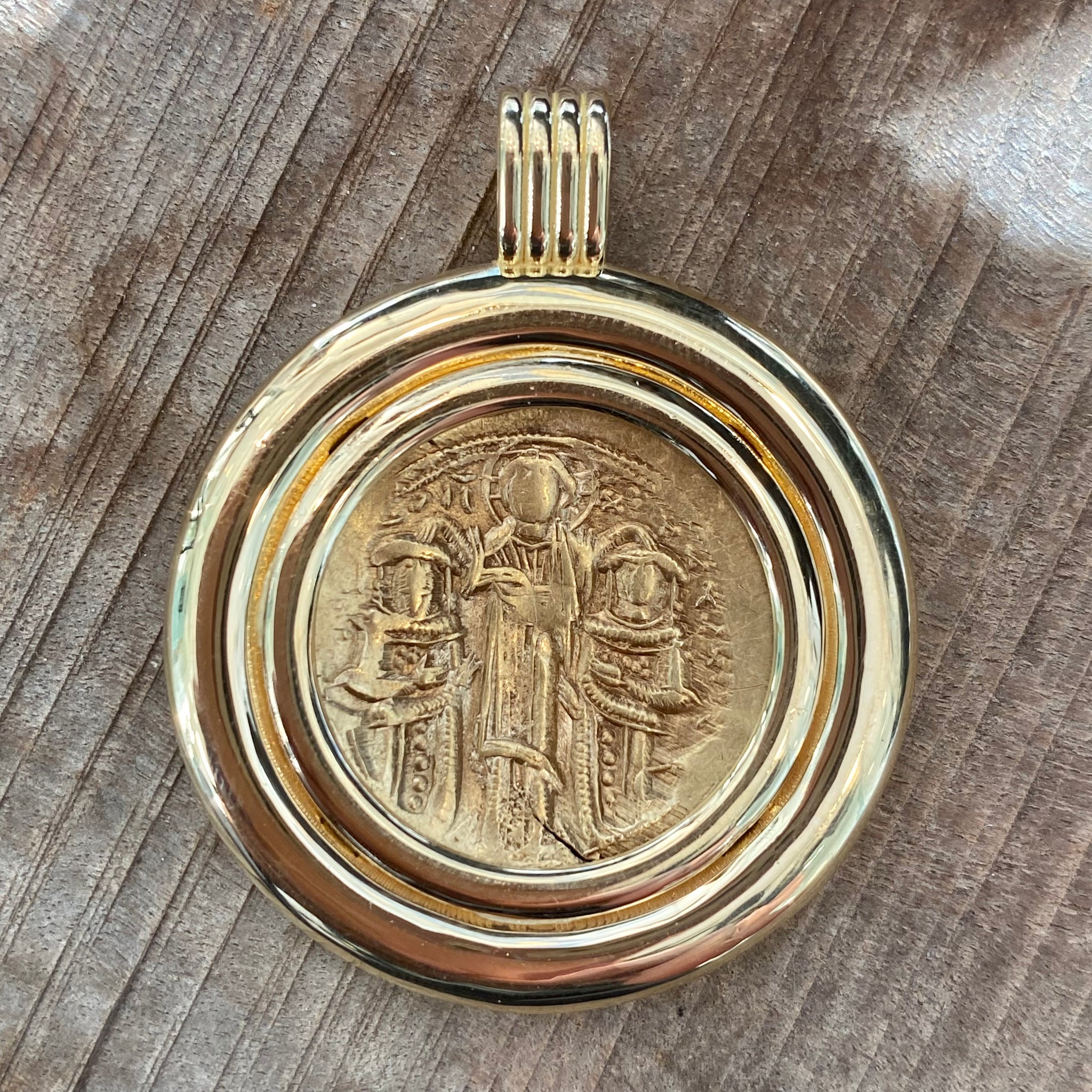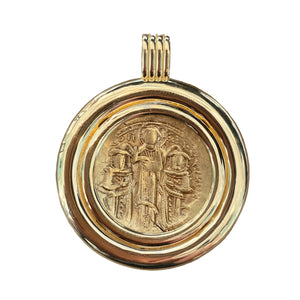Ancient Byzantine gold coin - AV Hyperpyron - Andronicus II (Palaeologus) - Circa 1294-1303 - Mounted in 18K gold
Sold Out
Denomination: AV Hyperpyron
Date: Circa: 1294-1303 AD
Mint: Constantinople.
Weight: 4.09 g
Mount: 18 KT gold
Grade: NGC 4935157-008 - AU details - Strike: 4/5 - Surface: 3/5
Description: Andronicus II Palaeologus, with Michael IX. 1282-1328. Obverse: Length facing figure of the Theotokos within city walls with six towers. Reverse: Christ standing facing, crowning Andronicus and Michael, kneeling to left and right respectively.
History: Andronicus was born on March 25th, 1259, at Nicaea. Sole emperor from 1282, Andronicus II immediately repudiated his father's unpopular Church union with the Papacy, which he had been forced to support while his father was still alive. The traditional gold currency of the Byzantine Empire had been the solidus or nomisma, whose gold content remained steady at 24 carats for seven centuries and was highly prized. For the sake of comparison, it must be noted that the Hyperpyron was worth 1/2 that of the Nomisma. From the 1030s, however, the Nomisma was increasingly debased, until in the 1080s, following the military disasters and civil wars of the previous decade, its gold content was reduced to almost zero. Consequently, in 1092, Emperor Alexius I Komnenos (1081–1118) undertook a drastic overhaul of the Byzantine coinage system and introduced a new gold coin, the hyperpyron (meaning "super-refined"). This was of the same standard weight (4.45 grams) as the solidus, but only 20.5 carat purity instead of 24, resulting in a reduced gold content of only 4.1 grams instead of 4.8 grams. The lower purity was due to melting down and inclusion of earlier debased coins. The hyperpyron remained the standard gold coin until gold coins ceased to be minted by the Byzantines in the mid-14th century.
63246


















